The Draft Law on Chemical Safety was proposed by the Ministry of Healthcare of Russia. The draft law aims to create a consolidated legal framework in the area of chemical safety.
The draft proposes to introduce a number of new definitions, such as “hazardous chemical factor”, “chemical threat”, “acceptable chemical risk”, “chemical safety”, “hazardous chemical substance”, “hazardous persistent chemical compounds”, etc.
The main chemical threats would include the development and implementation into production processes any new chemicals the impact of which on human health and the environment has not been fully studied yet. Another example of a chemical threat is a widespread use of new chemical substances, chemicals with high toxicity and of hazardous persistent compounds.
The principles of ensuring chemical safety include, among other things, the possibility to restrict human rights and freedoms to the extent that is necessary to protect life and health of people and for the purposes of state security. A systematic approach to the implementation of chemical safety measures and accessibility of information on chemical safety situation are another principles of chemical safety policy proposed by the draft law.
Draft law provides for measures that are to be taken by the Russian Federation in order to diminish possible chemical safety risks. These measures include introduction and implementation of the Globally Harmonized System of Classification and Labelling of Chemicals (GHS) and implementation of the most modern methods for the identification of the most hazardous chemicals present in the environment and the biological environment.
According to the draft Law, the Government is to implement legislation regulating chemical registration rules and procedures (currently very outdated and unclear) and to compile lists of chemicals prohibited for use. The Government would also be required to develop a nationwide database of hazardous persistent compounds, including POPs.
The draft law proposes to introduce financial incentives mechanism, such as tax benefits, risk assurance, credits, etc. for industrial facilities implementing low-waste technologies, resource-saving technologies, etc.
The draft Law is currently published on the governmental website and is open for stakeholder comments and suggestions until 20 March 2017.





